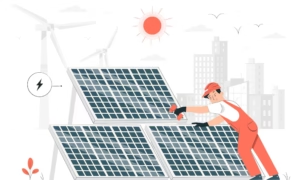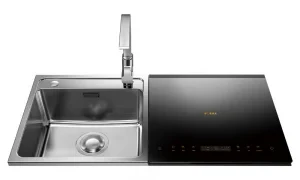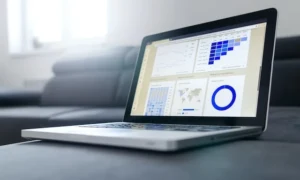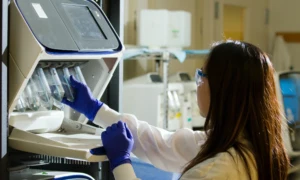
Introduction
In the pursuit of sustainable agriculture, technology has emerged as a transformative force, reshaping traditional farming practices into smart and efficient systems. This article explores the intersection of technology and sustainable agriculture, focusing on the innovative concepts of smart farming and crop monitoring. As the global population grows and environmental challenges intensify, leveraging technology becomes essential for optimizing crop yields, conserving resources, and ensuring food security.
The Digital Revolution in Agriculture
Smart farming, often referred to as precision agriculture, is a paradigm shift from traditional farming methods to data-driven, technology-infused approaches. It encompasses a range of technologies such as Internet of Things (IoT), sensors, drones, and machine learning. The integration of these technologies enables farmers to make informed decisions, optimize resource use, and enhance overall productivity.
IoT Sensors for Real-Time Data Collection
The deployment of IoT sensors in agriculture brings real-time data collection to the forefront. These sensors can be embedded in the soil, on machinery, and in the crop canopy, providing farmers with a continuous stream of information. Soil moisture levels, nutrient content, and weather conditions are among the many variables monitored, allowing for precise adjustments in irrigation, fertilization, and pest control.
Precision Agriculture and Data Analytics
Data analytics plays a pivotal role in transforming raw data into actionable insights for farmers. Through advanced analytics and machine learning algorithms, farmers can analyze historical data to predict crop yields, identify patterns, and optimize planting schedules. This data-driven approach enables precision agriculture, minimizing waste and maximizing the efficiency of farming operations.
Drones for Aerial Crop Monitoring
Drones have become invaluable tools for aerial crop monitoring. Equipped with high-resolution cameras and sensors, drones can survey large agricultural landscapes with unprecedented detail. Farmers gain insights into crop health, spot potential issues such as diseases or nutrient deficiencies, and assess the effectiveness of different agricultural practices. Aerial monitoring aids in swift decision-making and targeted interventions.
Automated Machinery and Robotics
Automation in agriculture involves the use of robotics and autonomous machinery for various tasks. Automated tractors, harvesters, and even weeding robots contribute to increased efficiency and reduced labor requirements. This not only saves time and resources but also minimizes the environmental impact associated with traditional farming practices.
Efficient Resource Management
Smart farming facilitates optimal resource management, a key component of sustainable agriculture. By precisely controlling the application of water, fertilizers, and pesticides based on real-time data, farmers can significantly reduce waste and environmental impact. This targeted approach enhances crop yields while minimizing the ecological footprint of agricultural activities.
Climate-Smart Agriculture for Adaptation
Climate-smart agriculture leverages technology to adapt farming practices to changing climate conditions. Real-time weather data, satellite imagery, and climate models enable farmers to anticipate and mitigate the impacts of climate change. This proactive approach is essential for building resilience in agriculture and ensuring food production remains sustainable in the face of a changing climate.
Integration of Farm Management Software
Farm management software platforms consolidate diverse data sources into a unified interface, providing farmers with a comprehensive overview of their operations. These platforms enable efficient planning, monitoring, and decision-making. From crop planning to inventory management, farm management software optimizes workflows and enhances the overall sustainability of agricultural practices.
Remote Sensing and Crop Health Monitoring
Remote sensing technologies, such as satellite imagery, contribute to crop health monitoring on a larger scale. These technologies provide a macroscopic view of agricultural regions, helping identify trends, assess crop conditions, and detect anomalies. Remote sensing assists in resource allocation, early pest detection, and responding to environmental challenges.
Technology for Sustainable Agriculture
As technology continues to advance, the future holds promising prospects for sustainable agriculture. Innovations in nanotechnology, artificial intelligence, and biotechnology are poised to further enhance the precision, efficiency, and sustainability of farming practices. Embracing these advancements will be pivotal in meeting the growing demand for food while minimizing environmental impact.
Conclusion
The marriage of technology and sustainable agriculture heralds a new era in food production. Smart farming and crop monitoring technologies empower farmers to cultivate crops with precision, conserve resources, and adapt to changing environmental conditions. Embracing these technological solutions is not just a step forward; it’s a commitment to nurturing a sustainable agricultural future that balances productivity with environmental stewardship.








































